All about tunbergia
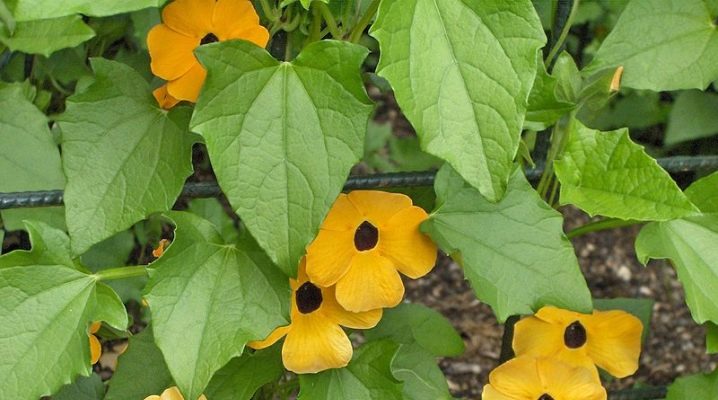
You can find out everything about tunbergia if you carefully read the proposed material. It is very important to pay attention to laurel and winged tunbergia, to other types of flowers. It is very important to study planting by seeds in open ground and at home, the peculiarities of care when growing.

general description
Thunbergia is a whole genus of flowering plants, which is part of the acanthus family of the order of lacustrine flowers. It is found naturally in tropical areas. Basically, we are talking about:
-
continental regions of the African continent;
-
Madagascar;
-
hot tropical areas of Asia.
The culture got its name from Karl Thunberg, a prominent naturalist from Sweden who studied wildlife in exotic regions of the world.

The genus Tunbergia includes annual and multi-year varieties... Their typical life form is ordinary grass. Some species are curly, there are also evergreen shrubs. The height of the tunbergia is most often not less than 2 and not more than 8 m.
Foliage is solid or lobed. By default, it develops oppositely on plants. The bisexual flowers of tunbergia are predominantly funnel-like; they can be either single or found in groups. The difference from other representatives of the acanthus family is the reduced calyx. Its function is actually taken over by the bracts.


In the acanthus family itself, there are no “relatives” of tunbergia widely known to non-specialists. However, they are in the order of clear-flowered, and above all we are talking about Saintpaulia and lavender, marjoram and thyme, lemon balm and sage. And also this number includes:
-
ash;
-
olive;
-
sesame;
-
Snapdragon;
-
digitalis;
-
plantain;
-
verbena.

Types and varieties
First of all, such a plant as laurel-leaved tunbergia stands out. It can bloom from May to September. It is characterized by a white or blue color. Other features:
-
height from 1.8 to 3 m;
-
development on neutral loose soil;
-
the birthplace of culture is the Malay Archipelago;
-
5-petal flowers placed in axillary racemes;
-
a large number of filamentous bare shoots;
-
length up to 2-3 m.

In the garden, a winged liana can also become a pleasant guest. In many countries around the world, she is better known as Black-Eyed Suzanne. A dark "eye" develops in the middle of a richly colored flower. The name of the species is associated with paired stipules, which, indeed, look like wings. Height can reach 1.5 m, when grown on a support - 2 m.
There are a lot of climbing stems. They can grow up to 1 m wide. Juicy green leaves visually resemble a heart or a spear. A slight serration develops at the edges of the foliage. Axillary flowers develop singly; in Russia, such a crop is grown as an annual.

Remarkable is the large-flowered tunbergia, it is also grandiflora, which curls intensively and has almost naked shoots. The foliage has a finger-dissected structure. Its length ranges from 12 to 20 cm. The shoots are uniformly serrated. The width of the flowers is 7.5 cm, the length is the same; single flowers are less common than those collected in inflorescences.

The upright variety, or otherwise, Erekta, is capable of blooming profusely and for a long time. It grows very quickly. Curly flexible shoots will be able to rise 200 cm. This is not a full-fledged bush form, of course, it is more likely to be considered a half-liana.And yet such a plant forms, indeed, strong and graceful bushes.
If you plant it in free land, it is likely to grow over 1.5 m.


It is worth considering individual breeding options for tunbergia. Variety King's robe (in another spelling of the Robe of Kings), it looks beautiful and is easily formed. Such a plant is capable of blooming perfectly in a room. Height does not exceed 1 m. Thin branches are covered with ovoid foliage.

Type of Susie yellow can curl over the support. And also it is used as an ampelous culture. Peculiarities:
-
foliage in the shape of a stereotypical heart;
-
excellent perception in pots and drawers on balconies;
-
funnel-shaped large flowers with a cross section of up to 5 cm;
-
lashes up to 250 cm long.

Thunbergia Bicolor Is a spreading shrub 1.5 m high. Faceted branches are relatively thin. The leaves are 7 cm long. The flowers are colored in an unusual way and look good. The corolla has a yellow tone, and the petals are blue in color and a white border.
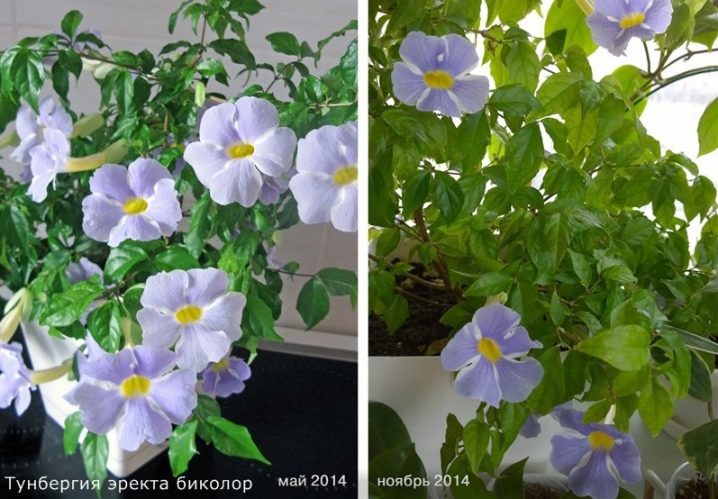
Landing
Sowing seeds for seedlings is done at the end of winter or at the very beginning of spring. Transplantation of mature seedlings grown from seeds into open ground at home is carried out approximately from 14 to 30 May. The choice of partially shaded areas is recommended. Both a bright sun and a deep shadow are hardly suitable for the development of tunbergia. The choice of nutrient soil with a decent level of drainage is necessary.
A neutral chemical soil containing lime is recommended. The plant is bred exclusively with seeds. It is advisable to process the seeds with "Fumar" or "Epin". Sowing is carried out in moist soil. Its optimal variant includes:
-
sod soil;
-
peat;
-
sand.
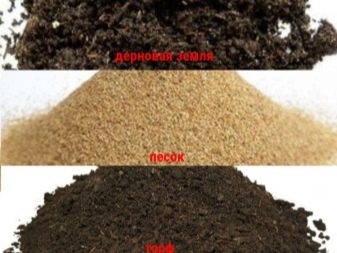

Another option involves using a mixture of sand with humus and leafy soil.... It is recommended to sprinkle the seeds with a thin layer of substrate. Crops are watered very carefully. The containers are covered with foil or glass. They are kept in this form on a windowsill, which is well illuminated, but excludes too bright direct light.
The substrate in the tanks needs to be constantly moistened. The optimum speed of seedling development is achieved at a temperature of 22-24 degrees. With a competent approach, success can be expected in 5-7 days. As soon as shoots appear, you can immediately remove the shelter. It is advisable to cut overly dense seedlings so that the plants do not interfere with each other.
Thinning is carried out as soon as 2 true leaves are formed... The weakest seedlings are completely removed. You can increase the branchiness and density of the bushes by pinching after reaching a height of 12-15 cm. Seedlings need to be fed with a nitrogenous mixture every 7 days.
Sowing in peat cups, 3 seeds per 1 container, helps to eliminate picks.

Growing care
Watering
Irrigation of tunbergia both on the balcony and in outdoor culture requires the use of soft warm water... Do this when the top layer of the earth dries out. In the summer, the need for watering occurs twice or three times a week. In the autumn, the intensity of water consumption is reduced. With the onset of winter, watering is carried out twice a month, the liquid should not get on the flowers.

Top dressing
Complex mineral mixtures are laid several times a month. It is recommended to dissolve them in water for greater effect. The first time the fertilizer is used in April, and in September, the frequency of fertilizing is gradually reduced to zero. Nutrient mixtures are placed in moist soil, because otherwise a burn of the roots is inevitable. Liquid fertilizers are often advised.

Tying
Curly tunbergia varieties are often grown in regular outdoor pots, or in special pots. An alternative solution is to use vertical supports... Fishing nets, plastic ladders, and steel or wood gratings are all involved.
With this approach, the shoots are distributed evenly. This avoids confusion of branches.
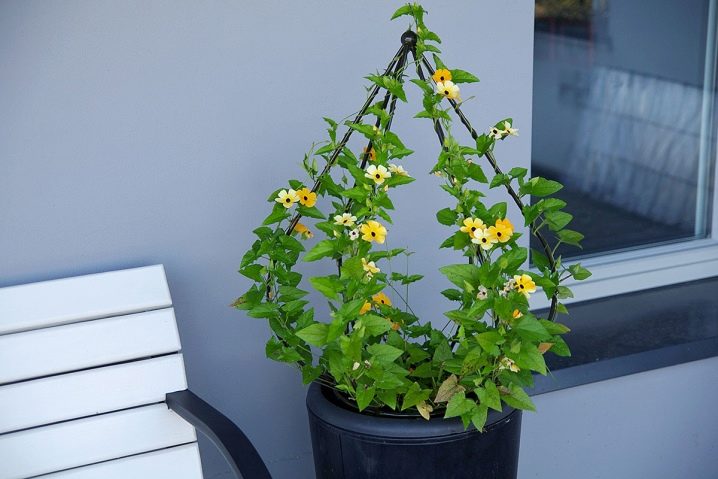
Wintering
Only those specimens that have been cultivated in flowerpots or containers will be able to winter at home. The tank is brought into the room, subject to trimming the shoots. Places of incisions are sprayed with permanganate. Then the plant is kept in cool conditions, at 14-15 degrees. During the winter, the soil is slightly moistened twice or three times; if the plant is cultivated in flower beds, they are not suitable for wintering.

Reproduction
Most often, tunbergia is propagated by cuttings. It is possible to use green or lignified cuttings. Such planting material is rooted in water in 2-3 weeks. In addition to grafting, you can also use seeds for propagation. They are harvested immediately after the bolls reach ripeness, without waiting for them to ripen.

Diseases and pests
Thunbergia is often affected by aphids, whitefly, scabbard, and spider mites. Mold growth indicates too much irrigation. Any stress, including a sudden change in temperature, negatively affects the vine. At low illumination, the decorativeness of the culture deteriorates.
If a plant is attacked by a spider mite, it is required to treat it with protective drugs as quickly as possible; in simple cases, a soap solution is used, in neglected cases, special means are used.

Application in landscape design
Thunbergia is well used in the design of vertical space inside flower beds and gardens. Nets and trellises are often used. In many cases, the plant is used to decorate walls and other vertical barriers. And also it is suitable for the design of arches and bowls, stone niches. Landing without support at all allows you to achieve twists along the ground, which also looks original.
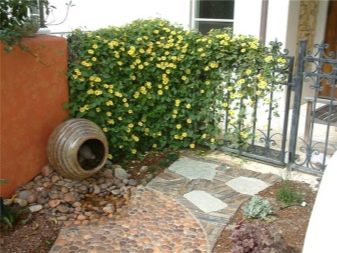

Thunbergia can be a visual complement to various other colors. A good option is to create a pair of flowering columns at the edges of the flower beds. And also this plant is masked by compost heaps and other unfavorable-looking objects. Tunbergia will be an excellent decoration for columns, gazebos, and curly shapes will improve the look of fences. Finally, this culture is an excellent choice for decorating rooms.








































































































The comment was sent successfully.